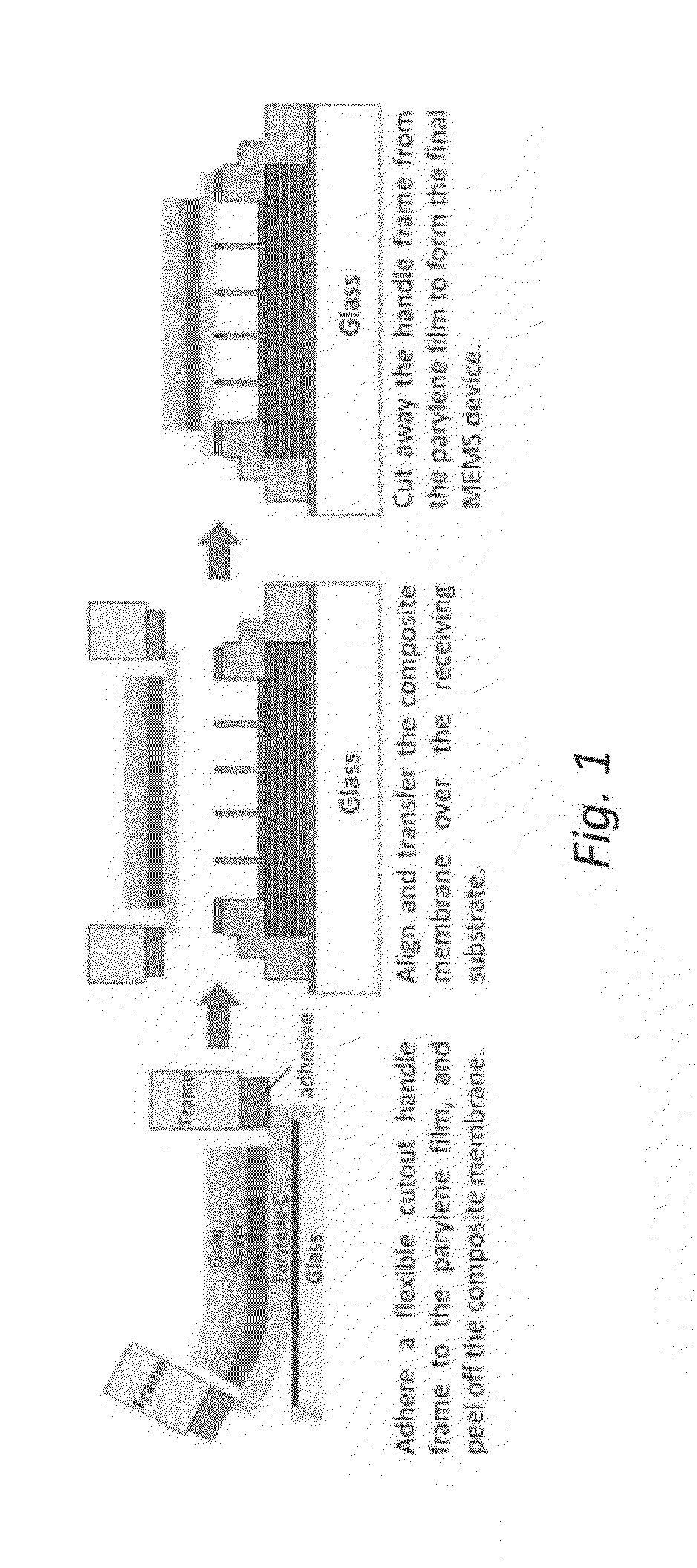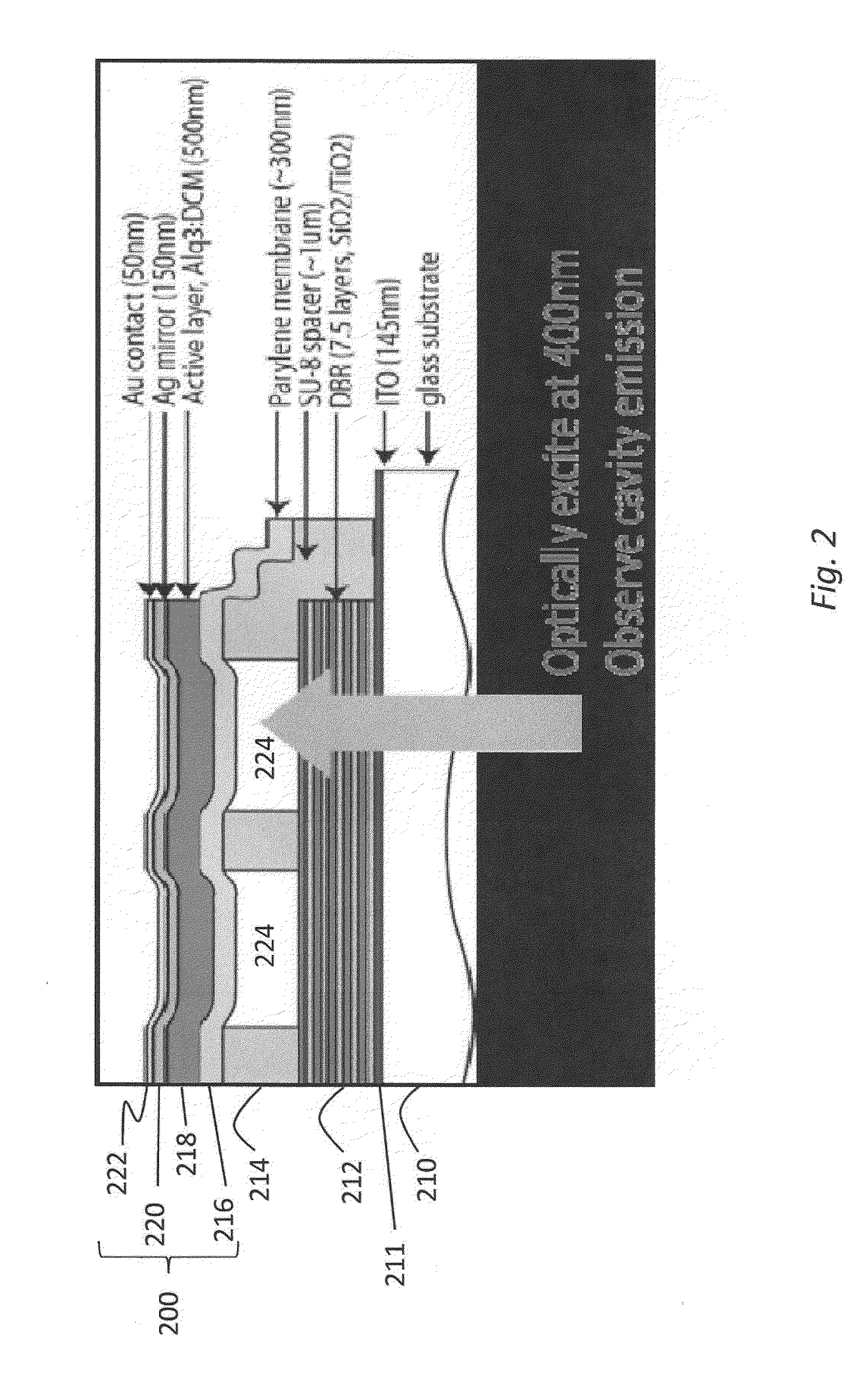Method and applications of thin-film membrane transfer
a thin-film membrane and transfer printing technology, applied in the direction of instruments, force measurement by measuring optical property variation, active medium materials, etc., can solve the problems of limited work within the existing silicon semiconductor-based framework, and achieve the effect of optimizing device performance, reducing applied voltage, and increasing tunable rang
- Summary
- Abstract
- Description
- Claims
- Application Information
AI Technical Summary
Benefits of technology
Problems solved by technology
Method used
Image
Examples
Embodiment Construction
[0032]The disclosed embodiments are generally directed to a solvent-free, room-temperature method for transferring very thin unsupported functional films along with several novel MEMS and optoelectronic devices that can be fabricated using such suspended micron- and submicron-thick composite membranes. In one application, poly-para-xylylenes (Parylenes) are used as very thin unsupported functional films.
[0033]In one embodiment, the disclosure relates to a solvent-free room-temperature method for transferring very thin unsupported functional films along with novel MEMS and optoelectronic devices fabricated using the disclosed suspended micron- and submicron-thick composite membranes. The solvent-free release and transfer technique for thin membranes may be enabled by using a micron- or sub-micron-thick vapor-deposited polymer, parylene. The chemically robust parylene film can be compatible with both vapor- and solution-based deposition methods useful for the fabrication of composite ...
PUM
| Property | Measurement | Unit |
|---|---|---|
| thickness | aaaaa | aaaaa |
| voltage | aaaaa | aaaaa |
| thickness | aaaaa | aaaaa |
Abstract
Description
Claims
Application Information
 Login to View More
Login to View More - R&D
- Intellectual Property
- Life Sciences
- Materials
- Tech Scout
- Unparalleled Data Quality
- Higher Quality Content
- 60% Fewer Hallucinations
Browse by: Latest US Patents, China's latest patents, Technical Efficacy Thesaurus, Application Domain, Technology Topic, Popular Technical Reports.
© 2025 PatSnap. All rights reserved.Legal|Privacy policy|Modern Slavery Act Transparency Statement|Sitemap|About US| Contact US: help@patsnap.com



